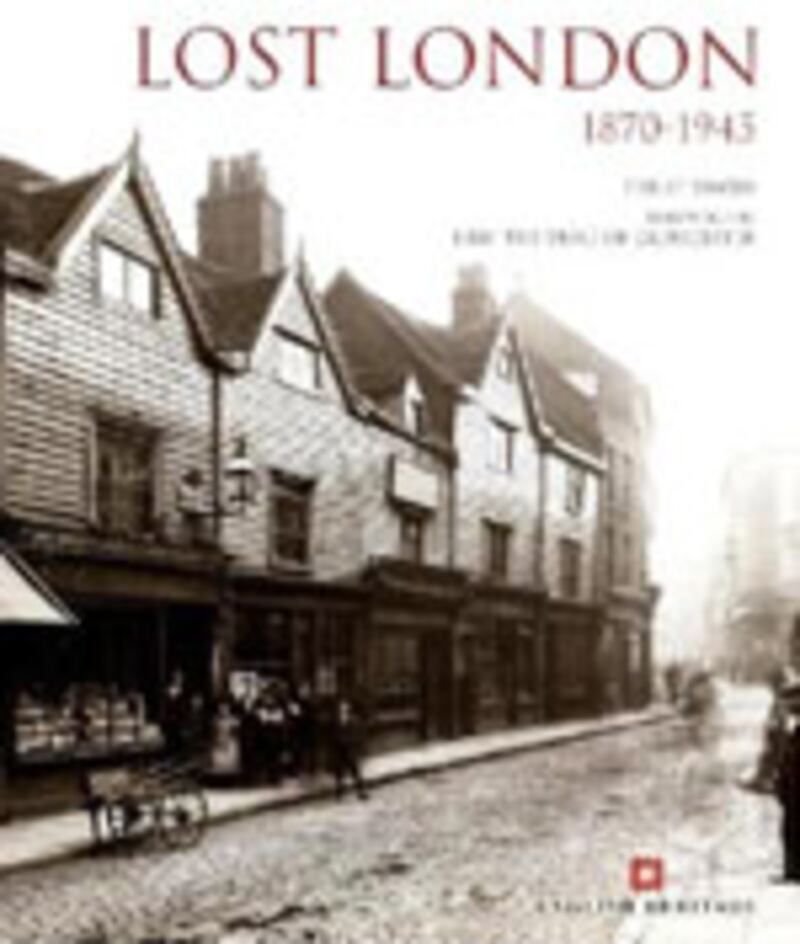
Glimpses of Old London
It has become a commonplace of British politics that, while getting to Downing Street is the culmination of much desire, living in the official residence of the prime minister is not. No. 10 and No. 11 form a warren of large unusable state rooms and small, unwelcoming private ones. Everyone knows that Samantha Cameron would rather stay at their own home nearby, just as Cherie Blair wanted to. But tradition and “security concerns” always triumph and to the wife's reprise of “that old kitchen has to go,” a new first family is moving in this week. At the same time, there is published a wonderful book of photographs, Lost London, with commentary by Philip Davies, featuring images from between 1870 and 1945. One of them being the Downing Street kitchen around 1925 during the premiership of one of David Cameron's Tory predecessors, Stanley Baldwin. It is not quite clear when that particular wooden table and pantry “had to go” and the outside of No. 10 had a sooty brick appearance then, which would have made it quite at home in the poorest parts of the East End, as Lindsay Duguid describes in her review this week.
Among many little lamented London losses, like much of the slum housing of Stepney, there are some mainly literary losses, such as Little Dorrit’s bedroom at the Marshalsea Prison, as well as some extraordinary reminders of recovery, including the wreckage of St. Bride’s Fleet Street, the journalists’ church, resting place of Samuel Richardson, and now restored so that its bombed and gutted state in 1941 is all but forgotten.

The Ancient Cults Revealed
Occasionally, on a visit to a classical temple in Italy or Greece, one comes across a group of modern pilgrims who have adopted it for their own “new age” religion, sometimes arguing that their feminist earth goddess from San Francisco is directly descended from the cults of Naples or Eleusis. Because the ancient Greeks and Romans were so very good at keeping secrets, as Mary Beard writes this week, almost anything can be said without too much fear of contradiction. There must have been literally hundreds of thousands, if not millions, of initiates, across the millennium of classical history. And at Eleusis they included some of the most prominent (and garrulous) writers, thinkers, and politicians of antiquity: Socrates and Plato, Hadrian, and Marcus Aurelius, and many more. These cults are often set apart, by modern writers, from the calmer, less participatory, less emotional traditions of Greco-Roman state religion. But we have no explicit ancient account of what the secret mysteries of any cult actually were, what happened at initiation, or what exactly was revealed to the initiates. So far as we can now tell, there was hardly a leaky vessel among them; or, at any rate, whatever the gossip on the ancient street, there was no one who risked committing the religious secrets to writing, even if they knew what they meant themselves, which they often probably did not. The book under review, Mystery Cults in the Ancient World by Hugh Bowden, is a “consistently sensible” treatment of a subject that has long attracted the wrong sort of attention.
A Very English Bore
With The Terrible Privacy of Maxwell Sim, the novelist Jonathan Coe has undertaken to write the life of a bore from the bore’s point of view (at one point, in the book’s best passage, the hero appears to bore someone literally to death) as his life unravels and he sets off on a journey of uncomfortable discovery. This is not unprecedented, but it is a stark choice. The reputation of Coe, writes Sean O'Brien, has moved steadily toward mainstream popular success while never quite renouncing the modest experimentalism in which he began work two decades ago. What Coe has done several times (in the musical organization of The Dwarves of Death, 1990, and in the film motif of What a Carve Up!, 1994) is to place an apparent realism within a further, clarifying formal frame. Coe is at heart a comic novelist who seems to view comedy as an order of the imagination in which the psychological and moral depth associated with major novelists, such as Henry James and Graham Greene, can be set aside in favor of patterning. From this point of view the patterning of the novel is its substance, a way of juxtaposing and resolving competing moral commonplaces. The result can be highly skilful and entertaining, but whether it can offer a substantial alternative to the realist tradition as it is currently sustained and extended in the work of, for example, Alan Hollinghurst or Hilary Mantel, remains open to debate. The peril of banality looms.
Plus: Check out Book Beast, for more news on hot titles and authors and excerpts from the latest books.
Peter Stothard's latest book is On the Spartacus Road: A Spectacular Journey Through Ancient Italy. He is also the author of Thirty Days, a Downing Street diary of his time with British Prime Minister Tony Blair during the Iraq War.






